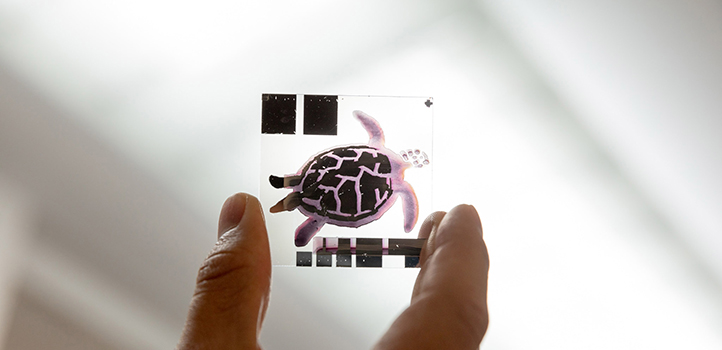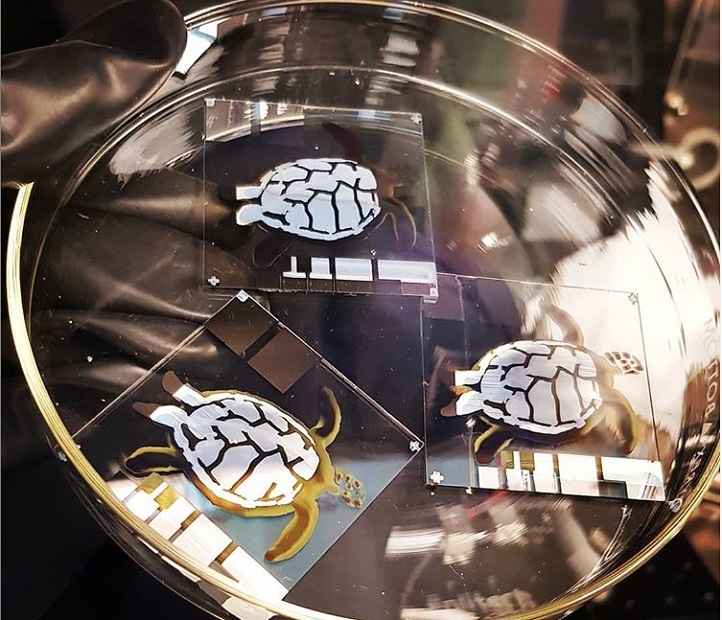
30 May, 2019


Inkjet printing is expected to fast track the commercialization of organic solar cells. Researchers from the KAUST Solar Center have exploited this technique to generate high-efficiency solar cells at large scales.
Organic photovoltaic materials could soon replace inorganic semiconductors in solar-powered devices because of their lightness, flexibility and low cost. These materials are easy to modify and process in solution, which makes them highly attractive for customization and large-scale production. In particular, customized solar cell designs can be used in conjunction with other printed electronics to power a plethora of applications, such as disposable electronics, intelligent packaging, interactive printed media and lab-on-a-chip devices.
Nonfullerene acceptors are emerging materials that have helped boost the efficiency of organic solar cells close to commercialization. These components are typically blended with electron donors in a light-responsive electrochemical layer. They have proven effective for drawing the light-generated pairs of electrons and negatively charged holes apart and maintaining electric current when exposed to sunlight. However, scale-up and manufacturing challenges have hindered efforts to transfer these materials from the laboratory to industrial and consumer-ready scales.
To bridge this gap, Derya Baran and her colleagues have engineered inkjet-printable solar materials containing a nonfullerene acceptor and deposited these inks over large areas to produce photovoltaic cells. The resulting devices achieved efficiencies of six percent, which is comparable to the efficiencies of their spin-coated analogs.
Ph.D. candidate Daniel Corzo explains that inkjet printing presents several advantages over traditional spin-coating and blade-coating deposition techniques, including low material consumption and rapid design changes through digital platforms. “This enables low-cost manufacturing, patterning into complex shapes, and multilayered device fabrication without the need for multistep lithography,” he adds.
The researchers optimized the printing process by tuning the viscosity and evaporation behavior of the ink to improve both how the droplets were ejected and how they interacted with the substrate surface. According to Corzo, this optimization has provided a repeatable and commercially scalable process.

Baran’s team also fabricated high-efficiency turtle-shaped devices, demonstrating the potential for the process to be customized. “It is amazing that we can now fabricate solar cells with complex shapes at the push of a button, opening the door to a wide variety of applications,” Corzo says.
The researchers are currently developing fully printed organic solar cells and enhancing cell efficiency using higher-performance materials. They are also investigating ways to integrate the devices in modules and with other printed electronics for self-powered autonomous sensing.